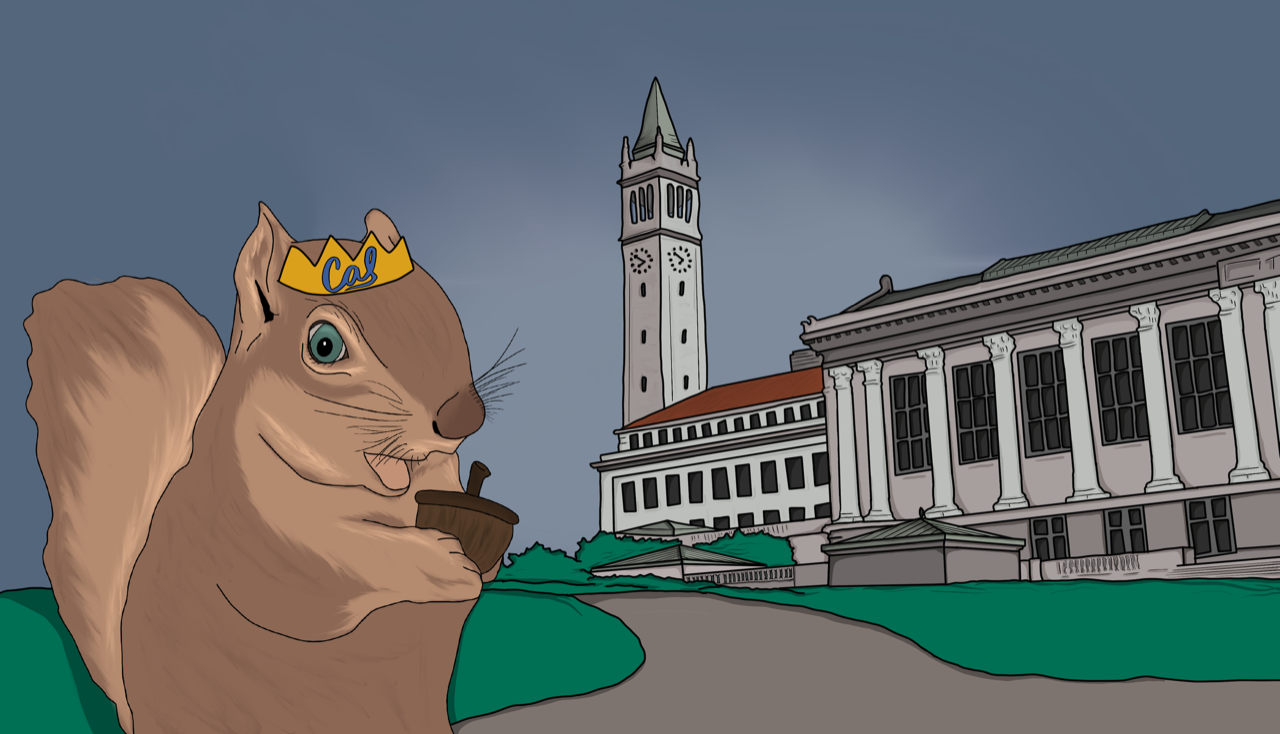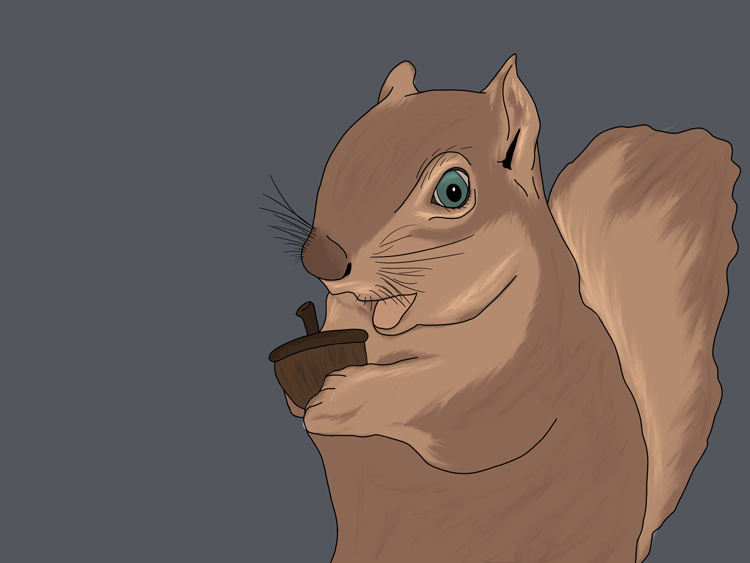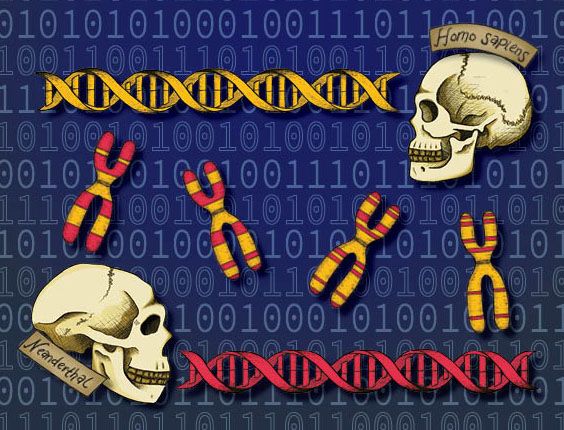Why is Everyone Nuts for Squirrels?
North America's beloved rodent illuminates research from psychology to physics

Squirrels are often considered menaces. They make mad dashes across busy roads, antagonize our canine friends, and steal from fruit trees in people’s gardens. Colleges across the country seem to be overrun by them. A recent study in the Journal of Mammalogy evidences that 95 percent of college campuses in North America report at least one squirrel species, with 40 percent reporting three or more. Unsurprisingly, our war with the squirrel is a well-documented one. In 1918, the state of California drafted its children into “battle” against the squirrel, raging a seven-day campaign to kill as many ground squirrels as possible. There was a hefty reward of nearly $800 for the young patriot who amassed the most rodent casualties.
Squirrels have transitioned from urban companions and pests to “model” organisms. In recent years, scientists have begun to focus on the animal’s biomechanics and spatial cognition. Engineer and inventor Mark Rober famously built a squirrel-proof bird feeder, documenting his escapades in a viral YouTube video with almost 47 million views. The video heavily relies upon the animal’s biomechanics, or the study of the structure, function, and motion of the mechanical aspects of biological systems. Squirrels, after all, are especially well known for their diversity in movement; they are characteristically known for circumventing tragedy through unpredictable and dynamic circumstances by changing their gait, speed, and angle of motion.
Biomechanical studies marry well with spatial ones. The way animals learn, adapt, and execute routes in complex environments is a puzzling phenomenon that scientists have been studying for decades. It is much easier to characterize such behaviors in the context of animal groups—effective leadership and decision making, as well as the mechanism of information transfer, can be connected to age, dominance, and “informed individuals,” who have tried and tested methods for acquiring resources and maintaining safety. But how do spatial cognition studies of group animals map to solitary ones, like the squirrel?
The Jacobs Lab of Cognitive Biology at UC Berkeley aims to answer that question in several projects involving the fox squirrel, who commonly share the UC Berkeley campus. In collaboration with WildCare, a wildlife hospital and animal rescue center, researchers at UC Berkeley also have the opportunity to intensely train and study orphaned juvenile squirrels in a range of behaviors—from leaping across branches to caching nuts.
It is our general familiarity with squirrels which makes them strong contenders for study, and like all wild animals, their visible behaviors and movements extend far beyond what meets the untrained eye.
Characterizing Emotion and Expressing Frustration the Squirrel Way
Dr. Mikel Maria Delgado, a former doctoral student in the Jacobs Lab, studied one aspect of cognition by training squirrels to retrieve foodstuffs from a plastic box. She wanted to understand how squirrels respond when frustrated, while also observing how they manipulate objects to retrieve food. This study’s importance is twofold. First, it asks if it is possible to characterize how squirrels “emote.” Because animal emotions are fundamentally different from human ones, with most animals unable to produce facial expressions that we can understand, other physical cues can serve as indications of behavior. Second, the study helps us better understand frustration. Is frustration a behavior that extends throughout the animal kingdom, or is it limited to just humans?
Delgado’s squirrels were trained to retrieve a piece of walnut every time they opened the box. After establishing this expectation (as squirrels particularly enjoy walnuts), Delgado switched to corn—a subpar snack option. Her squirrels exhibited their unhappiness by flagging or moving their tails back and forth in an S-shaped motion. At the same time, their faces were unreadable. Unlike some animals who bare their teeth or growl, Delgado’s squirrels were stone faced and silent. But when Delgado locked the box entirely, the squirrels reacted more viscerally. Not only were they more aggressive in their flagging, but they also spent more time interacting with the box by touching, hitting and sniffing it.
The squirrels’ brute force approach to opening the locked and empty box provide evidence that these animals also employ physical agitation when frustrated. It is statistically more likely that the box will open when dragged, bitten, and dropped, and squirrels are prepared for those odds. Understanding how they learn—through reinforcement—and how they react to new and unfamiliar test cases—through frustration—helps scientists better understand how these animals adapt in the wild.
Does This Cache Spark Joy?
Squirrels have important ecological roles. Their tendency to move plants and seeds from one place to another in a process called caching spreads seeds into new areas, altering the biodiversity composition of forests. Caching and foraging are two of the squirrels’ most emblematic behaviors and provide insight into how their decision making is more complicated than previously though.
“There are very few differences between the way mammal brains make decisions,” says Dr. Lucia Jacobs, Professor of Psychology at UC Berkeley. “But squirrels are particularly interesting because they have two-stage ‘wealth management.’ First, they have to find food through foraging, but then they cache the food, and their survival completely depends on retrieving that food in the winter.”
Because squirrels don’t hibernate, and food is sparse in the winter months (at least in the wild), squirrels spend a lot of time caching food away for later consumption. Squirrels also have their breeding season in the dead of winter; without a consistent diet, both male and female squirrels run the risk of being unable to procreate. A single squirrel is said to hide almost ten thousand nuts each year, but never in the same place. Is their behavior as erratic as it seems?
As scatter hoarders, squirrels must maximize the retrieval of dispersed food, while minimizing the risk of their caches being eaten by other animals. To do so, they use a spatial chunking algorithm, where caches with the same type of item are related to each other in physical location. Interestingly, another study by Delgado and Jacobs uncovered that squirrels preferred to store ideal foods (nuts that they enjoyed more or were heavier) further away from the source. These differences were minor, but these animals had both the ability to organize and recall these differences come winter.
Another way to explain this organizational framework is through optimal foraging theory. Here, animals are treated as “processing machines” in which they maximize certain factors, such as their food intake, and minimize others, such as their risk of predation.
“For squirrels, foraging is a real question. If they eat the food right away, they get everything that’s in it,” explains UCLA Ecology and Evolutionary Biology Professor Peter Nonacs. “If squirrels hide everything away, they might have food later when they need it, but they also run the chance it won’t be there—something else might have stolen it, the squirrels forget where they put their cache, or the item becomes rotten and moldy.”
Nonacs’ research looks at how these decisions are made at different times of day and different seasons of the year. His group has created a way to streamline data collection by marking the squirrels with an electronic chip and video recording their behaviors.
“We’re getting to a very detailed level of how squirrels are thinking about themselves, how they think about their environments, and how that affects their decision making,” Nonacs elaborates.
With spatial chunking and optimal foraging theory in mind, Jacobs’ group wanted to determine just how organized squirrels are. In a new experiment, the squirrels were each given a series of different nuts, and where the previous nut was cached, the next dispensed. This chaining allowed researchers to determine the cache area, or the total perimeter of all caches, with each squirrel creating its own spatial boundary. However, the squirrels did not appear to be chunking in this scenario.
“It could be that they do remember where the first nut is when they come to the fourth nut,” hypothesizes Jacobs, “but strategically it is too far away. They aren’t returning to a certain area in order to minimize the distance of their travel—they’re doing another calculation on top of the chunking and maximizing for benefit.”
How squirrels manage their “wealth” continues to fascinate scientists, especially when it becomes apparent that these animals’ guiding principles prove more complicated than the economic theories and models humans often use to understand risk. It becomes increasingly important to understand these systems, not only in the context of behavior, but also for what it can teach in terms of maximizing benefit and minimizing chances of jeopardy.
 Squirrels’ wealth management systems play an important role in understanding the animal’s behavior and foraging habits.
Squirrels’ wealth management systems play an important role in understanding the animal’s behavior and foraging habits.
Approaching Animal Movement with Quantitative Science
This automated approach to behavioral research coupled with ecological theory has created new opportunities for the incorporation of quantitative science, with many of the latest studies using artificial intelligence and machine learning to understand squirrel behavior. One exciting area of study that this has enabled is movement.
“Movement is the fundamental manifestation of animal behavior,” explains Alexander Vining, a graduate student in Animal Behavior at UC Davis. “In some ways, movement and behavior are synonymous. But the challenge is that when we name a behavior, it is really just our best interpretation of an animal’s movement; of what is happening at a more molecular level.”
As with any ecological question, researchers often look at the different “scales” of movement. Dr. Jacobs’ squirrel research is an example of local movement—an individual squirrel and its movement over time. But researchers like Vining, and UCLA PhD candidate Amanda Robin, look at movement on a much larger scale. In a collaboration with Dr. Jennifer Smith, an associate professor of Biology at Mills College, Oakland, Robin hopes to use machine learning models to help understand underground ground squirrel behavior.
The study starts with squirrels being captured and collared. Once they’re released back into the wild, Robin and her fellow researchers follow the squirrels around for three hours with a tape recorder. Every time the squirrel changes behaviors, they record this change. When the collars were eventually collected from the squirrels, they were able to associate the behavior the collars had recorded with a “behavioral label.” The next step is to build a neural network machine learning model, which will allow the group to understand what ground squirrel behavior looks like underground.
The collars that Robin uses are the latest revolution in biologging, where technology is used to log information about biological systems. While tools such as the radio collars Robin uses have been around for years, recent improvements can provide unprecedented amounts of continuous information about squirrel movement on the timescale of seconds.
“There’s even a gyroscope on the collar which records the squirrels’ spinning around in space,” Smith explains. “There are lots of different aspects on top of this—speed, direction, how deep in the ground the squirrels are—it was previously impossible to record these nuances in the past, so having access to this information is offering new insights about the secret lives of these animals.”
But understanding this data isn’t as simple as running it through a software program. “Our brains have massive biases,” underscores Vining. “Our role is to get enough data to show objectively that what we are seeing and describing makes sense. Without ecologists to ‘organize the chaos’ in terms that are approachable and analyzable, animal movement problems would be hard to solve. We can throw machine learning at things and get it to help us predict the future, but machine learning is not as good at helping us understand what is happening in the present.”
Amassing large amounts of data in ecology beseeches the invention of computational devices to unpack it. While the technological angle may seem very familiar in the Bay Area, the study authors believe the ecological angle should be too. “This study is interesting and applicable in a lot of ways to the community,” explains Robin. “You’re getting a snapshot of what our parks look like underground, and what’s going on in there.”
“California ground squirrels themselves are ecosystem engineers,” Robin continues. “They’re modifying the soil content, they’re modifying the composition of these protected areas—not to mention, they are also making homes for other animals we care about, like burrowing owls and our native rattlesnakes. So, knowing what they’re doing, and why they’re doing it, is pretty cool and has larger implications.”
The Robotic Squirrel
As squirrel researchers discover more about how squirrels behave, they also look to these creatures for inspiration. “The squirrel is just such an incredible animal,” exclaims Jacobs. “It can climb, hang backwards, leap, open nuts—if you made one robot that modeled squirrel movement, that would be one good robot.”
Researchers are working on just that. Jacobs’ lab is part of a Multi University Research Initiative (MURI) that brings together experts on biomechanics, neuroscience, mathematics, animal behavior, and robotics to better understand how squirrels move and the physics of their behavior. The most dynamic robotic systems have yet to recreate the full range of human motion. Recreating that of the dexterous squirrel, which uses more abstract forms of both positioning and strategy, will prove to be an even greater challenge.
The MURI has set a very high bar: making the most agile robot ever built that also learns. “We’ve had high bars in the past,” UC Berkeley Integrative Biology Professor Robert Full recounts. “We made one of the first robots that can run on any type of ground. We also made the first robot that can climb any surface. So, this is sort of the next level of trying to do something that is a real major challenge.”
One of the many foci of the robot is on the squirrel’s feet. The group uses biomechanics and high-speed cameras, recording the various leaps squirrels take. Then, researchers analyze the kinematics, or motion patterns, of the videos to understand the physics and ballistics of what the animal is doing.
In collaboration with the Museum of Vertebrate Zoology, Full’s team also uses phylogenetic analysis of various specimen traits, in particular squirrel paw pads. Squirrels grip almost all surfaces with ease and engineering a robot that can both maneuver and hold on to uneven surfaces with its biomechanical prowess has incredible potential in war zones, search and rescue efforts, and even cave exploration.
Why is Everyone Nuts for Squirrels?
The next time you see a squirrel running across the street or stealing your fruit, their behaviors may seem far less malicious and far more calculated. These intelligent creatures can illuminate a range of subjects, from psychology to physics. As researchers begin to analyze squirrels with more quantitative approaches, new perspectives about their behavior can serve as valuable tools to understanding animal systems.
For scientists passionately studying the squirrel, motivations are clear. “They’re urban, they’re tame, they’re cute, they’re long-lived. For many people who don’t have pets, squirrels are their only access to a wild animal,” claims Jacobs. “You can think of them as temperate zone primates. We don’t have monkeys this far north—but we do have squirrels.”
------- Samvardhini Sridharan is a graduate student in molecular and cell biology




